September 2/3, 1916, over Cuffley, Hertfordshire
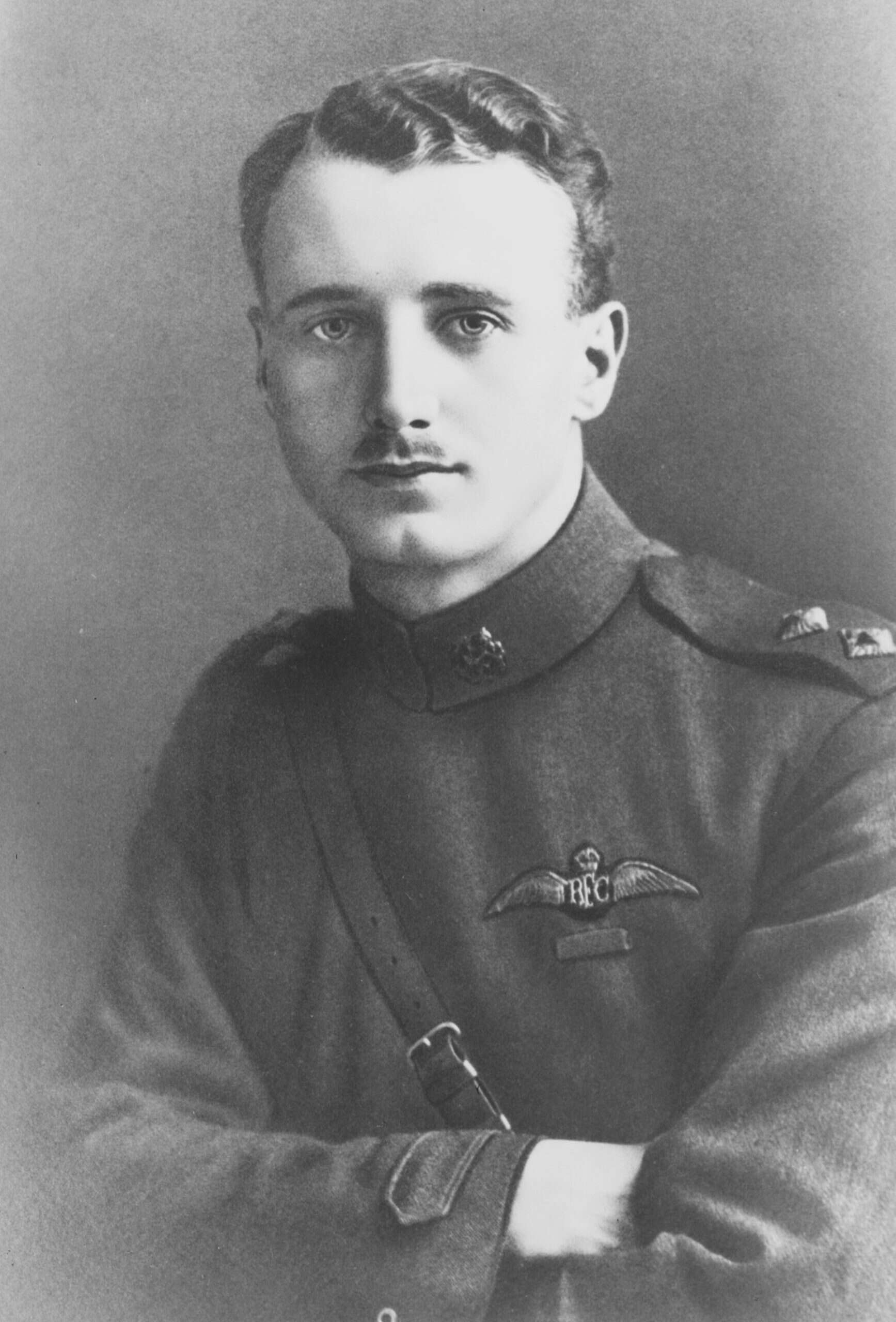
Lieutenant (later Captain) William Leefe Robinson VC,
Worcester Regiment and Royal Flying Corps
14 July 1895 – 31 December 1918
Lieutenant Robinson’s VC is significant on two major grounds: his was the first (of six to date) awarded for actions in the UK or UK Territorial Waters. And he was the first pilot to destroy a German airship over the UK. (This was the second airship destroyed by an aircraft, the first being by Flight Sub-Lieutenant Reginald Warneford, Royal Naval Air Service, over Belgium on 7 June 1915 for which he had been awarded the Victoria Cross. An airship had also been brought down into the Thames Estuary by anti-aircraft guns on 1 April 1916).
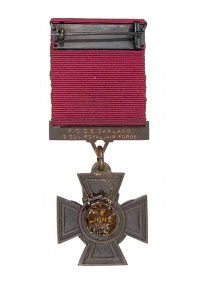 Obverse of a Victoria Cross
Obverse of a Victoria Cross
[NOTE: many sources refer to all German airships as Zeppelins: this is an over-simplification in that ‘Zeppelin’ has gone the way of Hoover and Biro where the individual manufacturer’s name has become a generic description for the product. Genuine Zeppelins were built by Count Ferdinand von Zeppelin’s company and were used by the German Navy; the German Army used airships built by Luftschiffbau Schütte-Lanz company.]
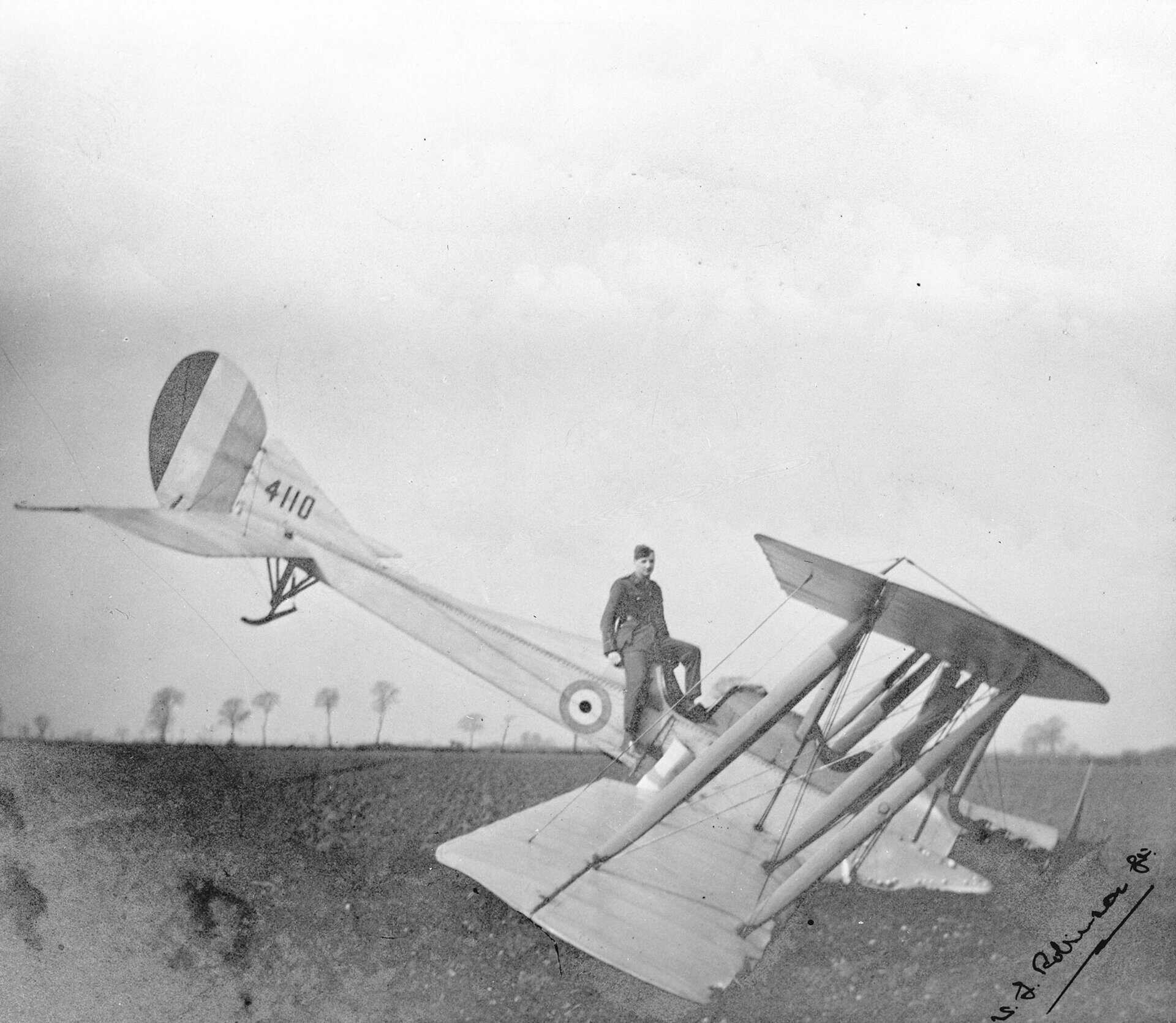 Royal Aircraft Factory BE2c of 39 Squadron: Robinson seated on fuselage
Royal Aircraft Factory BE2c of 39 Squadron: Robinson seated on fuselage
(RAF Museum P016569)
A bombing campaign against Britain was approved by the Kaiser on 7 January 1915 and from then on, airships of both the German Navy and Army conducted night attacks across Britain, causing casualties and public fear and anger. But, flying by night at altitude, they were close to invincible: British fighters of the time would take an hour to reach 10,000 feet, still below airships’ operational altitude.
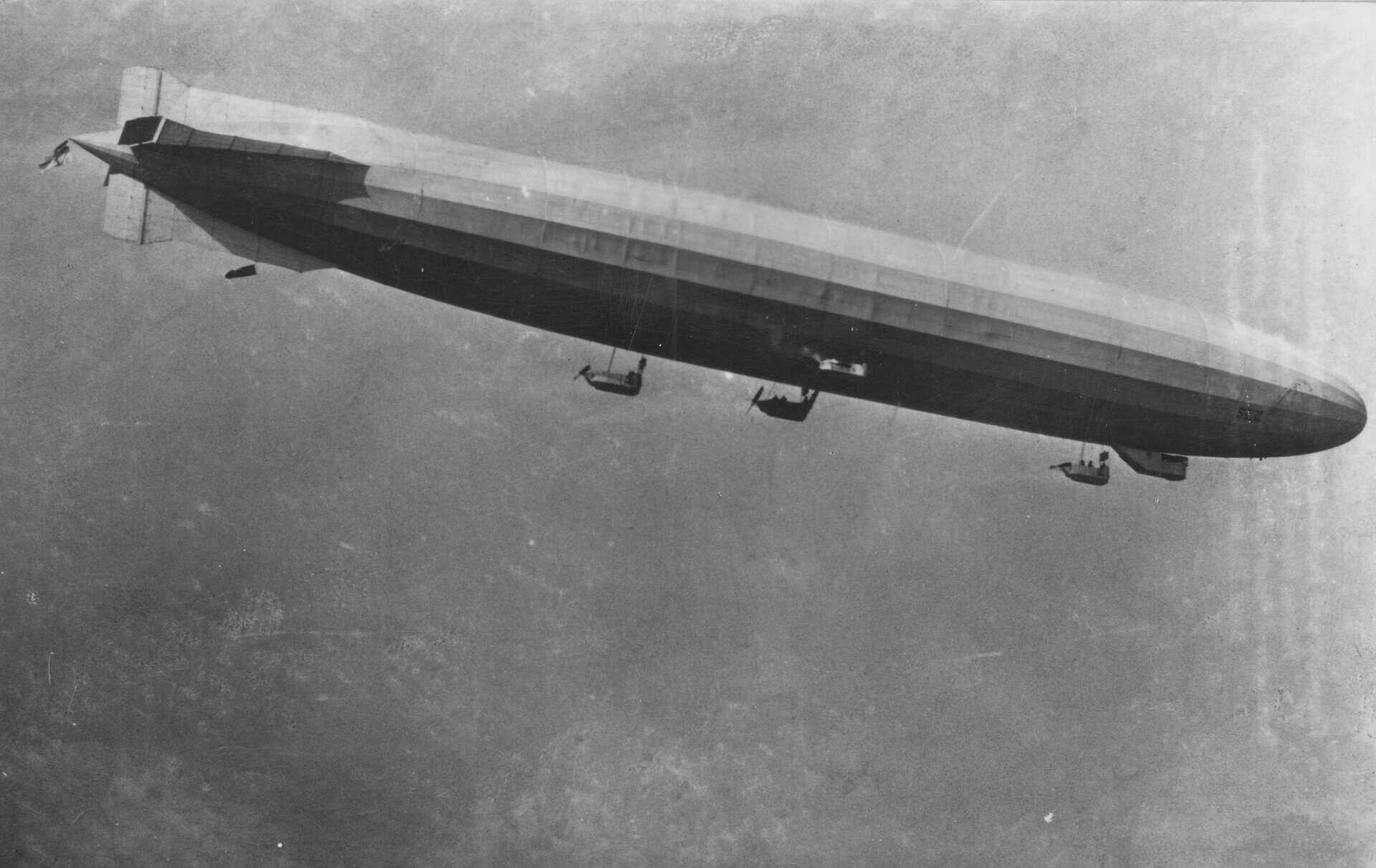 Schϋtte-Lanz airship SL 11 of the Imperial German Army Airship Service
Schϋtte-Lanz airship SL 11 of the Imperial German Army Airship Service
(RAF Museum PC74-41-372)
So, when Robinson destroyed one in an aerial combat viewed by thousands of Londoners, he became an instant national hero. And in the following few days, many thousands flocked to Cuffley to view the wreckage. And not a few returned home with ‘souvenirs’ they had ‘salvaged’. Some were later sold for charitable purposes but many remained in private hands.
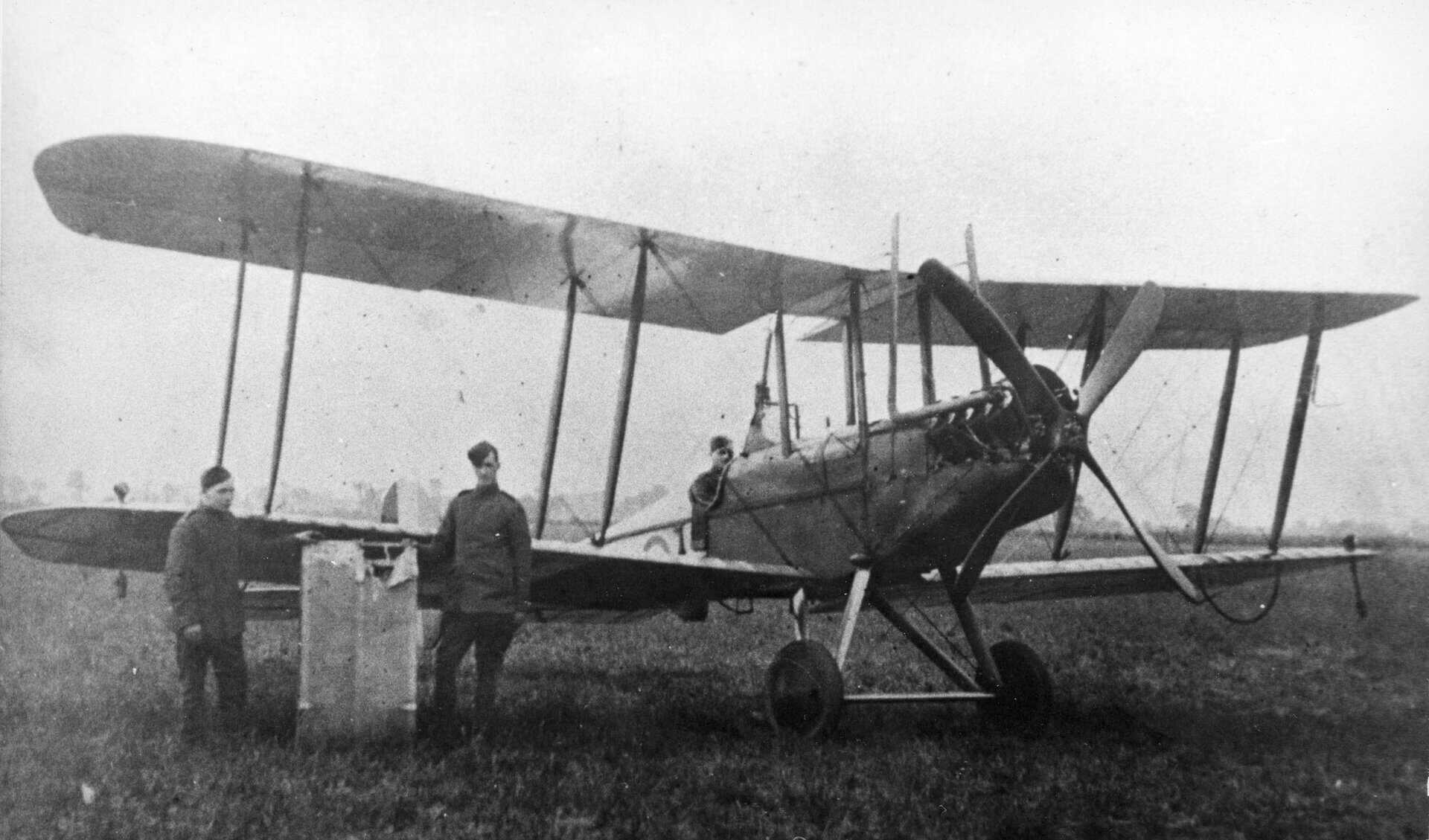 Robinson in cockpit of BE 2c, B Flight, 39 (Home Defence) Squadron,
Robinson in cockpit of BE 2c, B Flight, 39 (Home Defence) Squadron,
September 1916 (RAF Museum X003-2602-9668)
Robinson joined the Worcester Regiment in December 1914 but in March 1915, he transferred to the RFC as an Observer. He then applied for pilot training, gaining his RFC ‘wings’ on 15 September 1915. In February 1916, Robinson was appointed to 39 (Home Defence) Squadron at Sutton’s Farm Aerodrome (later renamed RAF Hornchurch) where the squadron was engaged in night fighter defence against the German airships.
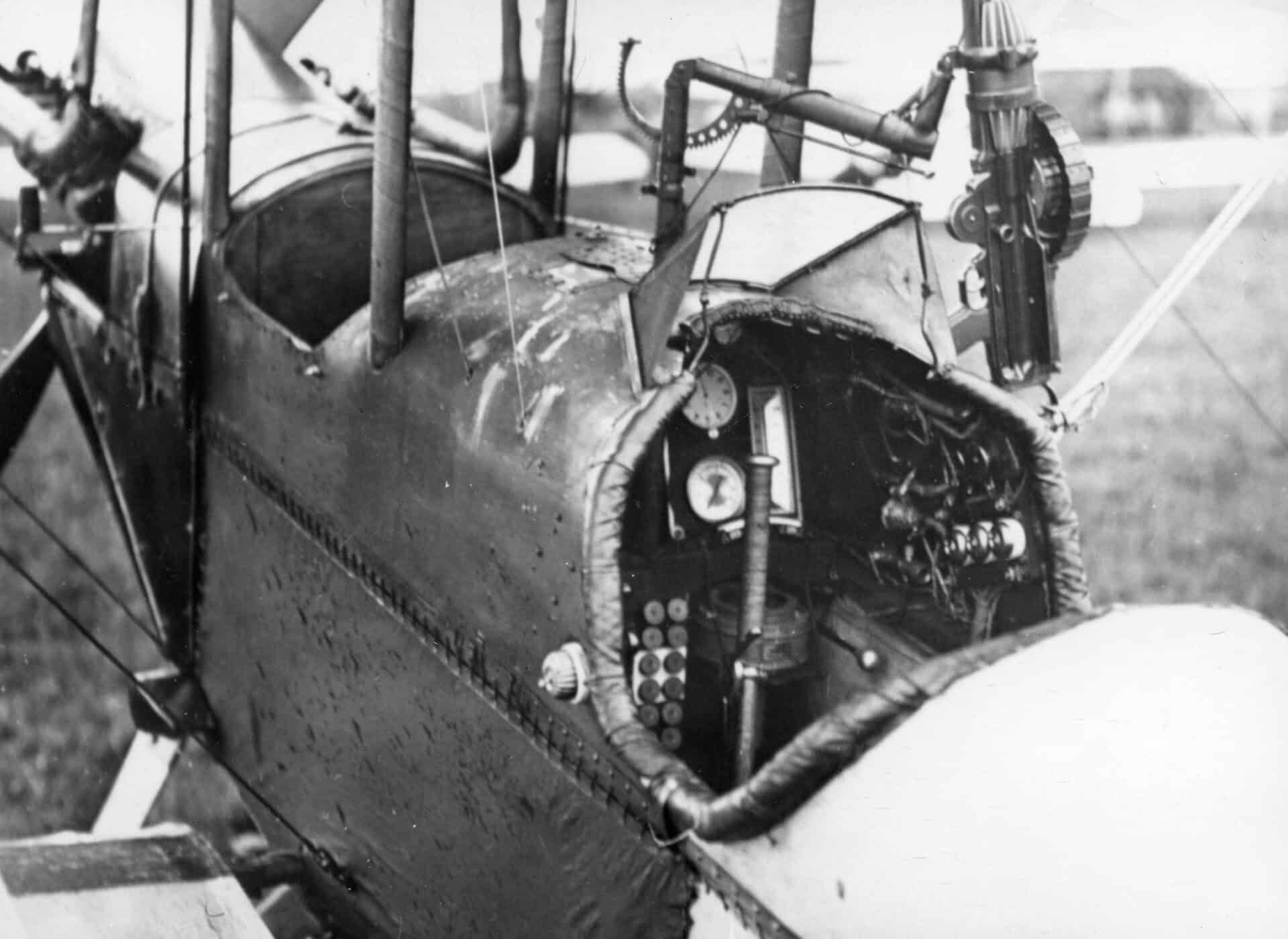 Cockpit of BE 2c (RAF Museum X003-2602-9671)
Cockpit of BE 2c (RAF Museum X003-2602-9671)
On the night of 2/3 September 1916, the German Army and Navy mounted a combined attack, the largest of the Great War. Robinson was pilot of BE 2c serial BE 2092, taking off at 2308 hrs. for a routine patrol; most of the squadron’s BE2c, including Robinson’s, had been converted to single-seaters, omitting the Observer for improved performance. He encountered airship SL 11, commanded by Hauptmann Wilhelm Emil Ludwig Schramm.
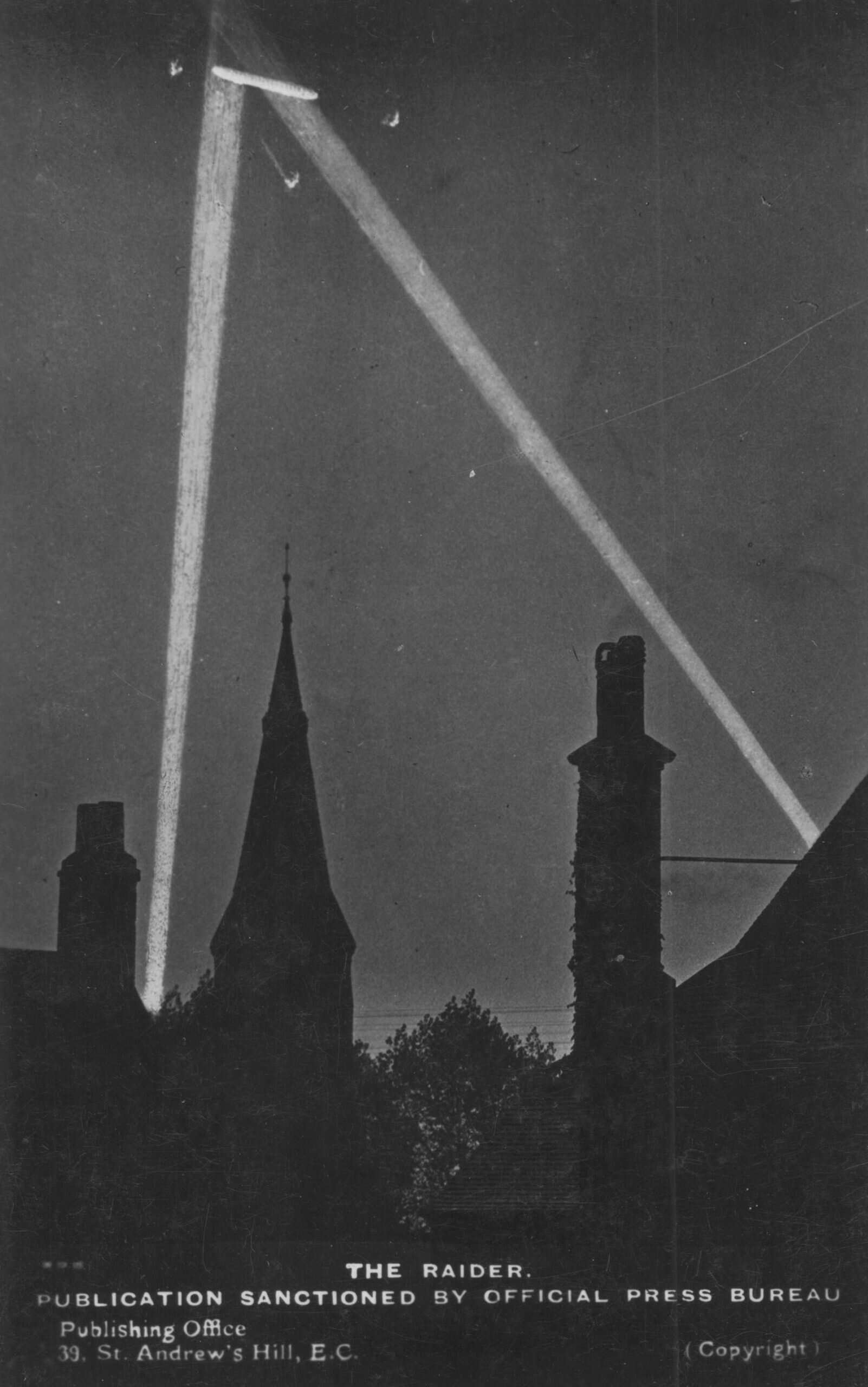 SL 11 held in searchlights over Cuffley
SL 11 held in searchlights over Cuffley
(RAF Museum PC97-89-12)
The London Gazette Tuesday 5 September 1916:
‘His Majesty the KING has been graciously pleased to award the Victoria Cross to the undermentioned Officer: — Lt. William Leefe Robinson, Worcester Regiment and Royal Flying Corps.
For most conspicuous bravery. He attacked an enemy airship under circumstances of great difficulty and danger, and sent it crashing to the ground as a flaming wreck. He had been in the air for more than two hours, and had previously attacked another airship during his flight.’
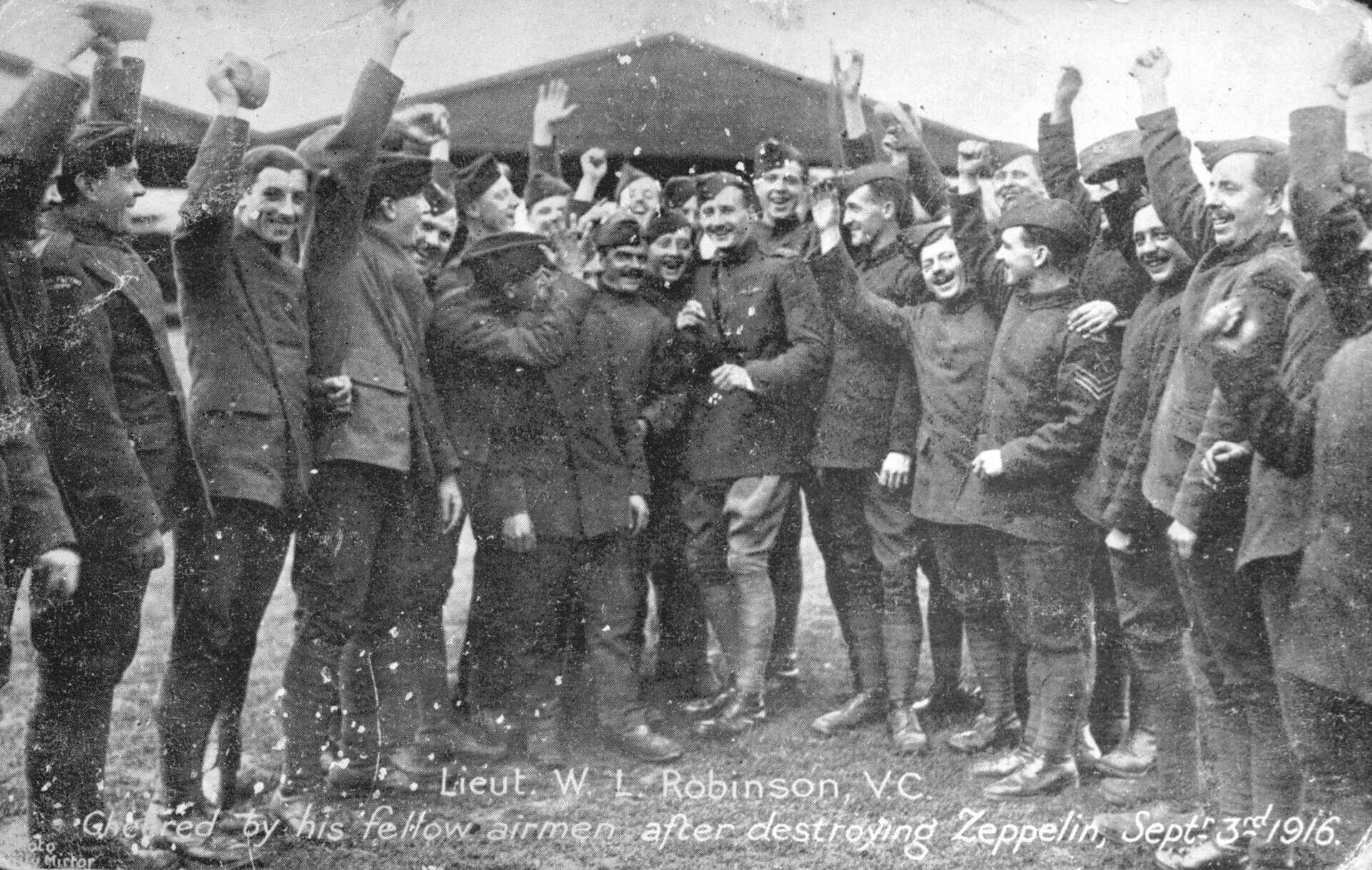 Robinson cheered by his fellow airmen September 3rd, 1916
Robinson cheered by his fellow airmen September 3rd, 1916
(RAF Museum P000033)
This Gazette entry is notable for two reasons: it was promulgated within 48 hours of the action, an absolute record; and, bearing in mind the momentous nature of the action, its brevity. A much more comprehensive review of his life and the VC action may be found in ‘For Valour, the Air VCs’ by Chaz Bowyer (see Bibliography); a copy may be studied in the Reading Room at RAF Museum, Hendon.
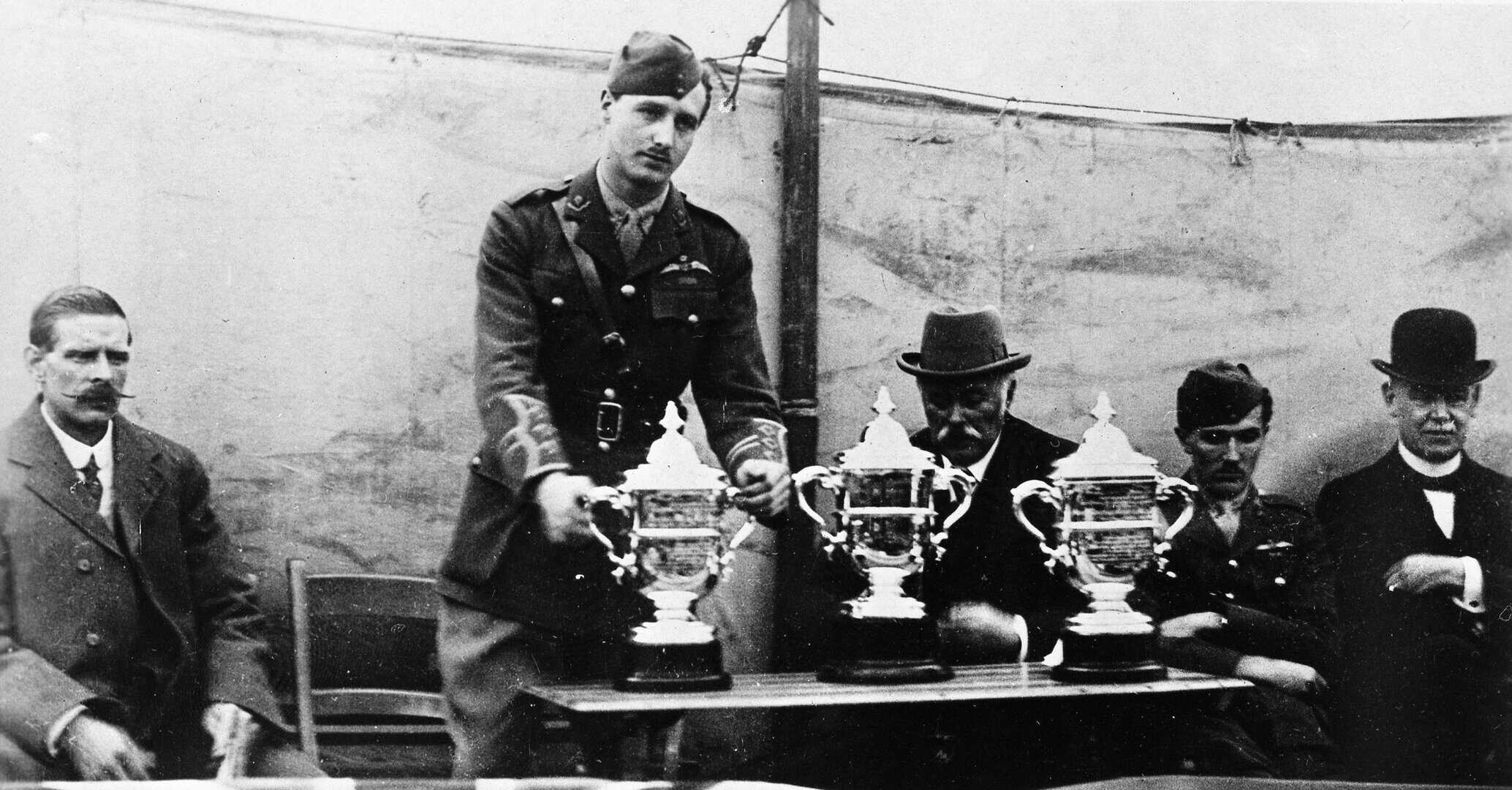 Robinson receiving a Cup presented by the people of Hornchurch
Robinson receiving a Cup presented by the people of Hornchurch
(RAF Museum P016570)
Robinson was instantly a public hero, receiving gifts and enormous attention, which he disliked, so in the new rank of Captain, he was appointed to 48 Squadron, which was posted to France on 8 March 1917. The Squadron’s first sortie was to be Robinson’s last.
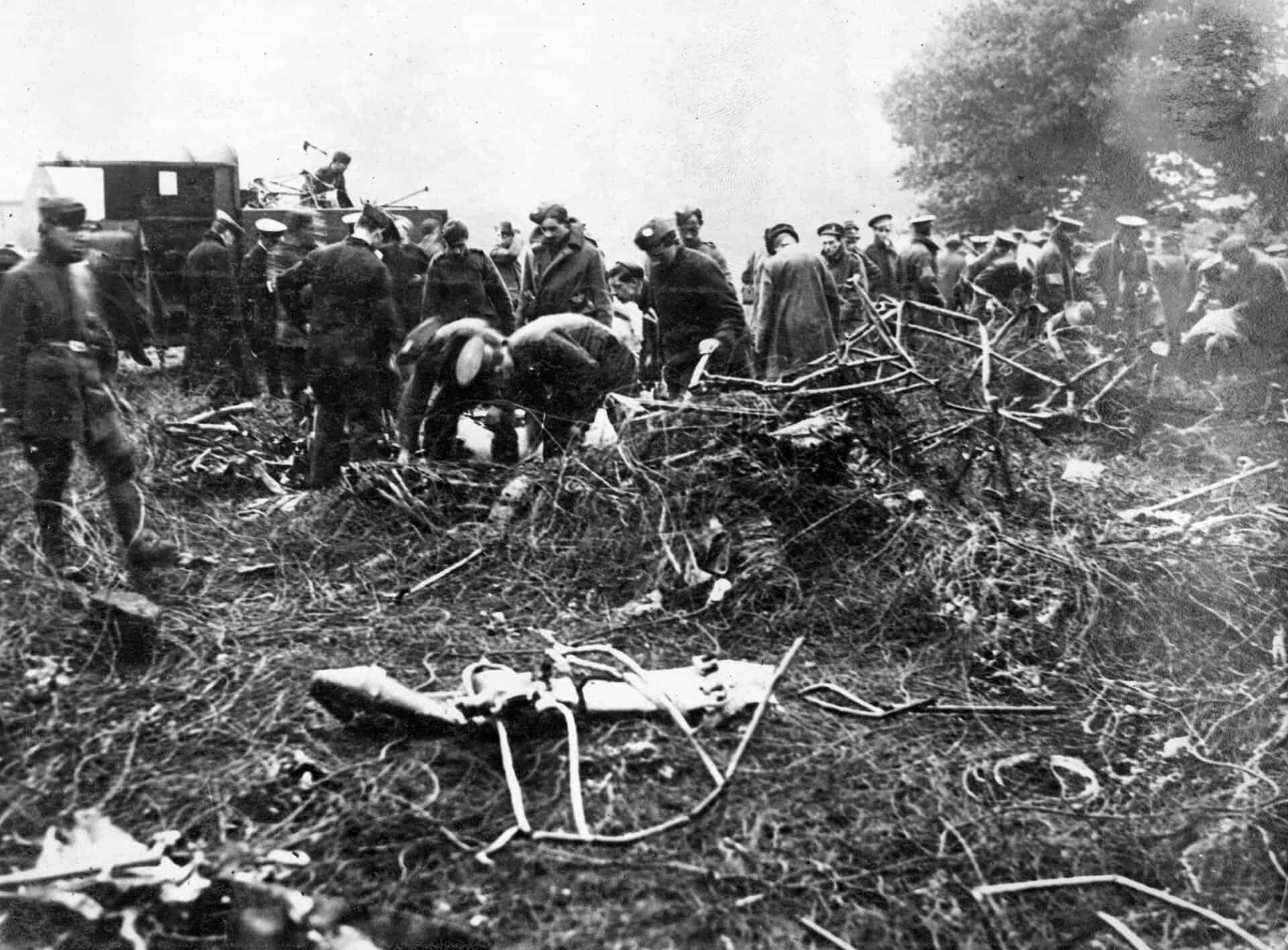 RFC personnel begin recovery of wreckage of SL11
RFC personnel begin recovery of wreckage of SL11
(RAF Museum x001-2645-b)
With an Observer, Lieutenant Warburton, Robinson flew Bristol F2A serial A3337 but very soon fell victim to the Albatros DIII of Vizefeldwebel Sebastian Festner of Jagdstaffel II, led by the German ace Rittmeister Manfred von Richthofen. Robinson was uninjured and taken into captivity, where his escape efforts led to dire treatment in various PoW camps. Repatriated to England on 14 December 1918, in his weakened condition, he fell victim to the Spanish Influenza pandemic.
Robinson’s Victoria Cross is held by Imperial War Museum, London.
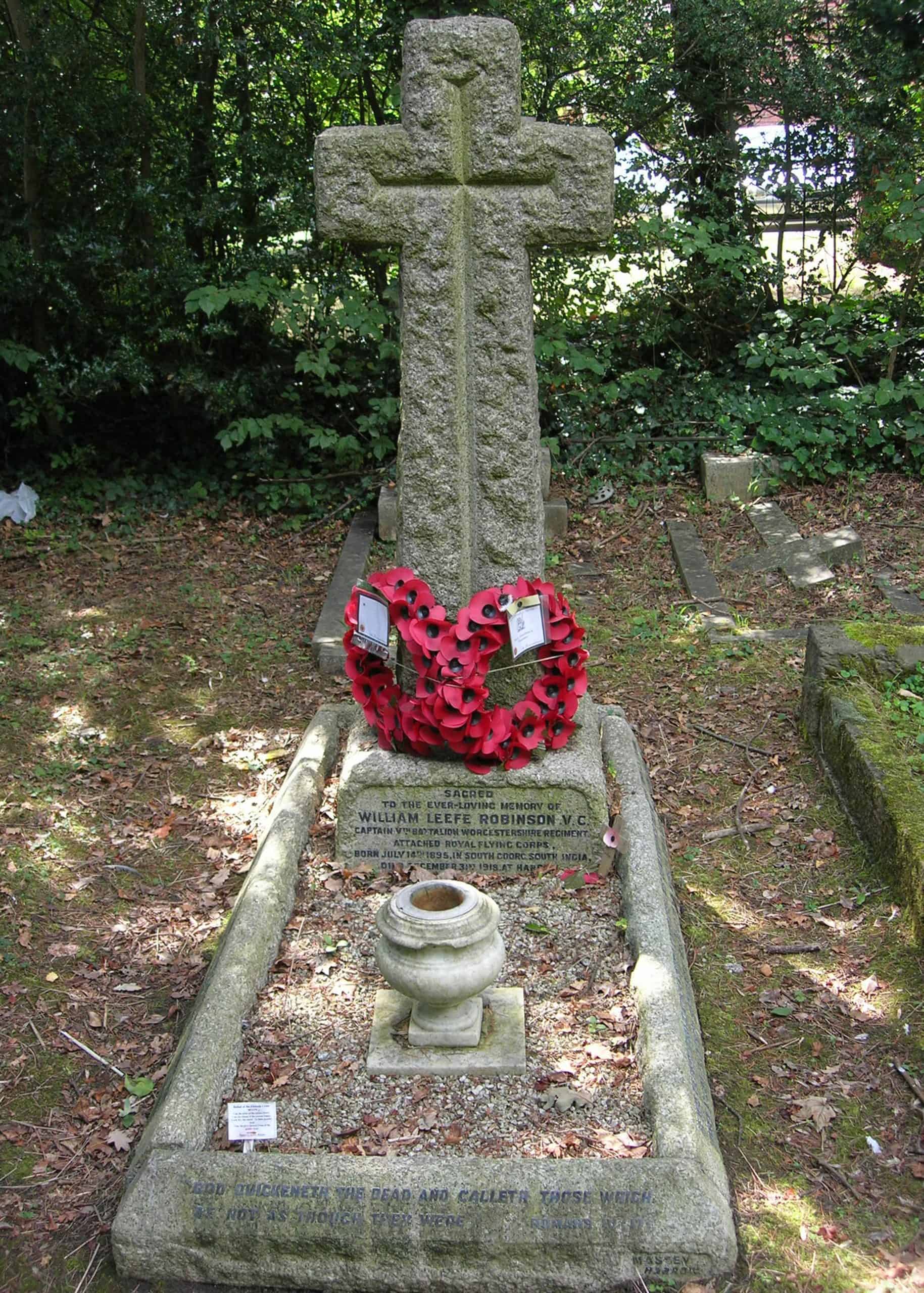
Grave of Lieutenant Robinson VC (© The War Graves Photographic Project)
He is buried in Harrow Weald (All Saints) Churchyard Extension. His destruction of the German airship is considered so significant historically that his grave and headstone are Grade II listed.
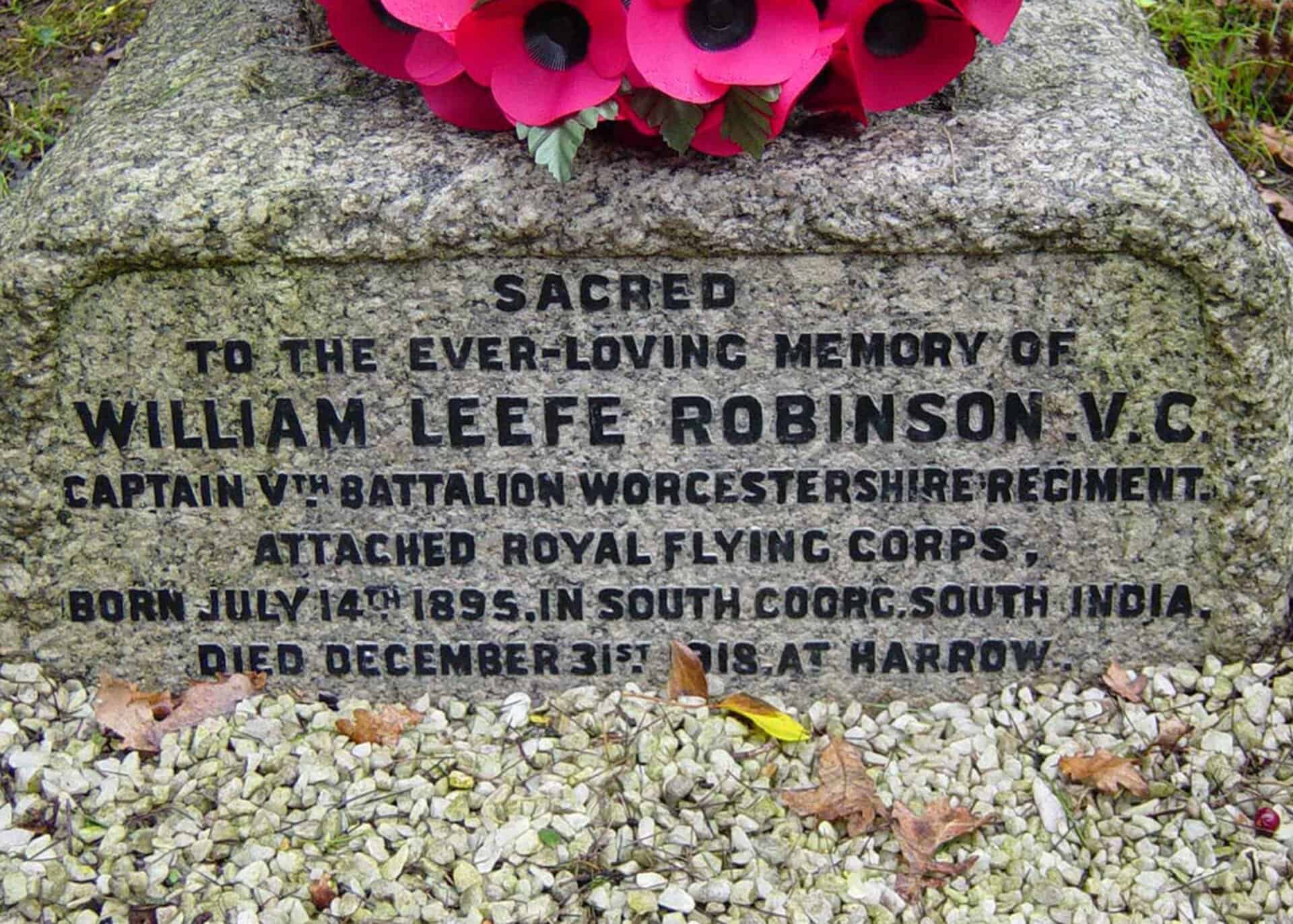
Grave detail (© The War Graves Photographic Project)
Credits
Citation: London Gazette 5 September 1916
Additional biographical details: For Valour: The Air VCs Chaz Bowyer, Grub Street Publishing.